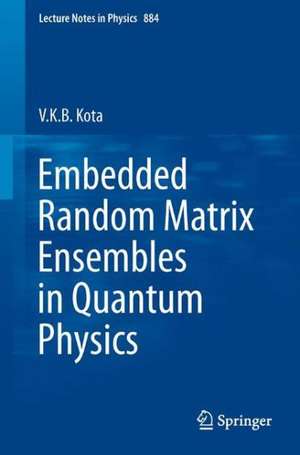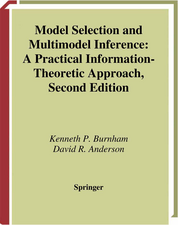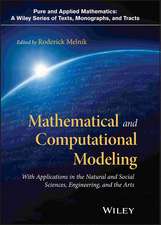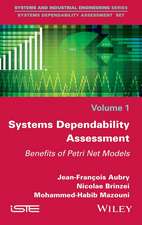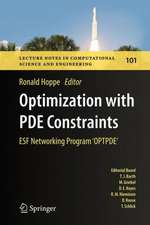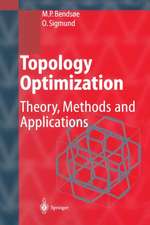Embedded Random Matrix Ensembles in Quantum Physics: Lecture Notes in Physics, cartea 884
Autor V.K.B. Kotaen Limba Engleză Paperback – 19 mar 2014
The present text is an exhaustive introduction to and survey of this important field. Starting with an easy-to-read introduction to general random matrix theory, the text then develops the necessary concepts from the beginning, accompanying the reader to the frontiers of present-day research. With some notable exceptions, to date these ensembles have primarily been applied in nuclear spectroscopy. A characteristic example is the use of a random two-body interaction in the framework of the nuclear shell model. Yet, topics in atomic physics, mesoscopic physics, quantum information science and statistical mechanics of isolated finite quantum systems can also be addressed using these ensembles.
This book addresses graduate students and researchers with an interest in applications of random matrix theory to the modeling of more complex physical systems and interactions, with applications such as statistical spectroscopy in mind.
Din seria Lecture Notes in Physics
- 19%
 Preț: 424.00 lei
Preț: 424.00 lei - 17%
 Preț: 360.73 lei
Preț: 360.73 lei -
 Preț: 429.22 lei
Preț: 429.22 lei - 17%
 Preț: 427.62 lei
Preț: 427.62 lei - 17%
 Preț: 460.26 lei
Preț: 460.26 lei -
 Preț: 427.96 lei
Preț: 427.96 lei -
 Preț: 481.93 lei
Preț: 481.93 lei - 17%
 Preț: 494.66 lei
Preț: 494.66 lei -
 Preț: 281.90 lei
Preț: 281.90 lei - 17%
 Preț: 493.20 lei
Preț: 493.20 lei - 17%
 Preț: 426.72 lei
Preț: 426.72 lei -
 Preț: 365.15 lei
Preț: 365.15 lei -
 Preț: 374.52 lei
Preț: 374.52 lei -
 Preț: 407.98 lei
Preț: 407.98 lei - 20%
 Preț: 428.13 lei
Preț: 428.13 lei -
 Preț: 263.30 lei
Preț: 263.30 lei - 15%
 Preț: 593.73 lei
Preț: 593.73 lei - 15%
 Preț: 528.13 lei
Preț: 528.13 lei -
 Preț: 493.12 lei
Preț: 493.12 lei - 17%
 Preț: 425.68 lei
Preț: 425.68 lei -
 Preț: 280.65 lei
Preț: 280.65 lei -
 Preț: 163.41 lei
Preț: 163.41 lei - 18%
 Preț: 726.59 lei
Preț: 726.59 lei -
 Preț: 394.84 lei
Preț: 394.84 lei - 15%
 Preț: 709.63 lei
Preț: 709.63 lei - 15%
 Preț: 623.90 lei
Preț: 623.90 lei - 20%
 Preț: 476.93 lei
Preț: 476.93 lei - 15%
 Preț: 428.05 lei
Preț: 428.05 lei -
 Preț: 342.78 lei
Preț: 342.78 lei - 18%
 Preț: 851.93 lei
Preț: 851.93 lei -
 Preț: 346.61 lei
Preț: 346.61 lei -
 Preț: 391.57 lei
Preț: 391.57 lei - 15%
 Preț: 633.16 lei
Preț: 633.16 lei -
 Preț: 451.71 lei
Preț: 451.71 lei - 5%
 Preț: 1497.80 lei
Preț: 1497.80 lei -
 Preț: 374.85 lei
Preț: 374.85 lei -
 Preț: 380.07 lei
Preț: 380.07 lei - 15%
 Preț: 516.14 lei
Preț: 516.14 lei - 15%
 Preț: 583.78 lei
Preț: 583.78 lei - 15%
 Preț: 508.60 lei
Preț: 508.60 lei -
 Preț: 469.73 lei
Preț: 469.73 lei -
 Preț: 388.90 lei
Preț: 388.90 lei - 15%
 Preț: 500.24 lei
Preț: 500.24 lei -
 Preț: 386.52 lei
Preț: 386.52 lei - 15%
 Preț: 472.88 lei
Preț: 472.88 lei -
 Preț: 424.27 lei
Preț: 424.27 lei -
 Preț: 380.07 lei
Preț: 380.07 lei - 15%
 Preț: 500.01 lei
Preț: 500.01 lei
Preț: 395.25 lei
Nou
Puncte Express: 593
Preț estimativ în valută:
75.63€ • 80.88$ • 63.06£
75.63€ • 80.88$ • 63.06£
Carte tipărită la comandă
Livrare economică 17 aprilie-01 mai
Preluare comenzi: 021 569.72.76
Specificații
ISBN-13: 9783319045665
ISBN-10: 3319045660
Pagini: 420
Ilustrații: XV, 402 p. 92 illus., 27 illus. in color.
Dimensiuni: 155 x 235 x 22 mm
Greutate: 0.59 kg
Ediția:2014
Editura: Springer International Publishing
Colecția Springer
Seria Lecture Notes in Physics
Locul publicării:Cham, Switzerland
ISBN-10: 3319045660
Pagini: 420
Ilustrații: XV, 402 p. 92 illus., 27 illus. in color.
Dimensiuni: 155 x 235 x 22 mm
Greutate: 0.59 kg
Ediția:2014
Editura: Springer International Publishing
Colecția Springer
Seria Lecture Notes in Physics
Locul publicării:Cham, Switzerland
Public țintă
GraduateCuprins
Introduction.- Classical Random Matrix Ensembles.- Interpolating and other Extended Classical Ensembles.- Embedded GOE for Spinless Fermion Systems: EGOE (2) and EGOE (k).- Random Two-Body Interactions in Presence of Mean-Field: EGOE (1+2).- One Plus Two-Body Random Matrix Ensembles for Fermions With Spin-Degree of Freedom: EGOE (1+2)-s.- Applications of EGOE(1+2) and EGOE(1+2)-s.- One Plus Two-body Random Matrix Ensembles with Parity: EGOE(1+2)-π192.- Embedded GOE Ensembles for Interacting Boson Systems: BEGOE (1+2) for Spinless Bosons.- Embedded GOE Ensembles for Interacting Boson Systems: BEGOE (1+2)-F and BEGOE (1+2)-S1 for Bosons With Spin.- Embedded Gaussian Unitary Ensembles: Results From Wegner-Racah Algebra.- Symmetries, Self Correlation and Cross Correlation in Enbedded Ensembles.- Further Extended Embedded Ensembles.- Regular Structures With Random Interactions: A New Paradigm.- Time Dynamics and Entropy Production to Thermalization in EGOE.- Brief Summary and Outlook.- References.
Textul de pe ultima copertă
Although used with increasing frequency in many branches of physics, random matrix ensembles are not always sufficiently specific to account for important features of the physical system at hand. One refinement which retains the basic stochastic approach but allows for such features consists in the use of embedded ensembles.
The present text is an exhaustive introduction to and survey of this important field. Starting with an easy-to-read introduction to general random matrix theory, the text then develops the necessary concepts from the beginning, accompanying the reader to the frontiers of present-day research. With some notable exceptions, to date these ensembles have primarily been applied in nuclear spectroscopy. A characteristic example is the use of a random two-body interaction in the framework of the nuclear shell model. Yet, topics in atomic physics, mesoscopic physics, quantum information science and statistical mechanics of isolated finite quantum systems can also be addressed using these ensembles.
This book addresses graduate students and researchers with an interest in applications of random matrix theory to the modeling of more complex physical systems and interactions, with applications such as statistical spectroscopy in mind.
The present text is an exhaustive introduction to and survey of this important field. Starting with an easy-to-read introduction to general random matrix theory, the text then develops the necessary concepts from the beginning, accompanying the reader to the frontiers of present-day research. With some notable exceptions, to date these ensembles have primarily been applied in nuclear spectroscopy. A characteristic example is the use of a random two-body interaction in the framework of the nuclear shell model. Yet, topics in atomic physics, mesoscopic physics, quantum information science and statistical mechanics of isolated finite quantum systems can also be addressed using these ensembles.
This book addresses graduate students and researchers with an interest in applications of random matrix theory to the modeling of more complex physical systems and interactions, with applications such as statistical spectroscopy in mind.
Caracteristici
Authored by a leading researcher in the field Introductory and Self-contained presentation Useful as reference text on the subject matter Includes supplementary material: sn.pub/extras
